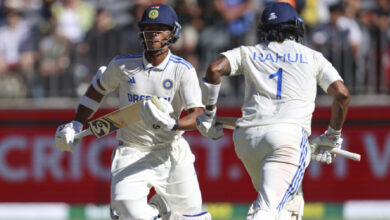Hockey to trial penalty corner rule change to ‘protect’ defenders, may end drag flick | Football News

OVER THE next 10 months, the International Hockey Federation (FIH) will try out a new penalty corner rule that, if eventually implemented, could spell the end for drag-flicks. The FIH also believes it could reduce the danger of defenders getting injured as they tend to rush towards the ball struck at up to 150 kmph when a drag-flick is executed.According to the proposed rule, during a penalty corner, all attackers except the pusher at the backline must start at least 5 metres outside the striking circle – called the ‘D’. The ball must travel outside the 5m dotted line — which is beyond the ‘D’ — before it can be played back into the ‘D’ for a shot on goal, and give defenders more time to react to situations.The current captain of the Indian hockey team, Harmanpreet Singh, is one of the fiercest drag-flickers in the world and if the rule change is introduced post the trials, a player like him may not be as impactful when it comes to goalscoring.
In a letter to national federations last week, the FIH said they “would like to conduct the trials between August 2023 and May 2024”. The proposed rule, hockey’s world governing body said, will be tried at a “small number of competitions around the world” in men’s and women’s senior, junior and masters hockey.
Based on the data and feedback, the FIH will decide whether to continue with the exing rule – wherein the attacking side starts at the edge of the ‘D’, a pusher pushes the ball, which has to be stopped just outside the ‘D’ before a shot can be taken at goal, either a hit or a drag-flick.
India vice-captain Harmanpreet Singh performs a drag flick. (AP)
The FIH, however, has underlined that the rule change, if implemented, will be introduced only after the Paris Olympics next year.
The trials are likely to be held in domestic hockey and the national federations have been asked to provide details of the leagues and competitions in which they can test the new rule.
Goal-conversion statics along with the number of injuries and their nature will be observed during the trial phase.
The world body led four key reasons to consider the rule change:
n To ‘reduce the danger removing the direct shot and therefore no need for defenders to run towards an attacker shooting at goal.
n Putting emphasis on “overload of players… rather than straight strike of goals”, claiming it is “more similar to normal hockey play”.
n Removing the need for protective gear, which it claims has been an entry-level barrier due to cost, while at the same time, ensuring ‘safe appearance’ of hockey.
n Speeding up the game reducing the time allowed for a team to set up for a penalty corner from 40 seconds to 20.
The move comes on the back of a consultation project titled, ‘Future of the Penalty Corner’, launched in May 2022 the FIH. Back then, the world body told national federations in a letter: “We must consider making changes to the penalty corner rules before serious or fatal incidents occur and not wait to react until afterward.”
More than 4,700 people took part in the survey and there was an ‘even split’ between those who found the sport ‘too dangerous’ and those who believed there was a ‘good balance of safety and spectacle’. The FIH said there was an ‘even split’ between those who wished to continue with the exing rules and those who wished for a change.
The safety aspect of penalty corners has been scrutinised primarily due to drag flicks – the action when an attacker, in one motion, picks up the ball just outside the ‘D’, drags it into the circle and flicks it towards the goal. The flicks, unleashed from a dance of roughly 12m from the goal, can travel at speeds of up to 150kmph.
In late 2020, the members of FIH’s health and safety committee analysed 295 matches from 11 international tournaments that took place in 2015 and 2016. Their research showed that penalty corners were responsible for 13.9 percent of the overall injuries (49 out of 352), and included blows to the head.
While goalkeepers wear complete protective gear, the defenders are left vulnerable, especially the first player who rushes straight towards the drag-flicker to block the angle, and those standing near the goal posts as the last line of defence.
The defenders are nowadays allowed to wear protective gear – gloves, visors, knee pads, etc – but the FIH said it gives them “an unnatural sense of safety”, thus putting themselves in dangerous positions to stop the ball from going into the goal.
If the new rule comes into force, the defenders will not be allowed to wear protective gear during penalty corners.
What has changed
Illustration: Suvajit Dey
Unlike the exing rule, where the attacking players can stand at the top of the ‘D’, as per the proposed rule they will have to stand beyond the 5m dotted line outside the circle.
The exing rule allows the attacking team to take a direct shot at goal from penalty corners after stopping the ball just outside the ‘D’. Under the proposed rule, the ball has to travel 5m outside the circle before it is stopped the players, who will be positioned at the dotted line.
The ball has to be played back inside the ‘D’ before a shot can be taken at goal.







